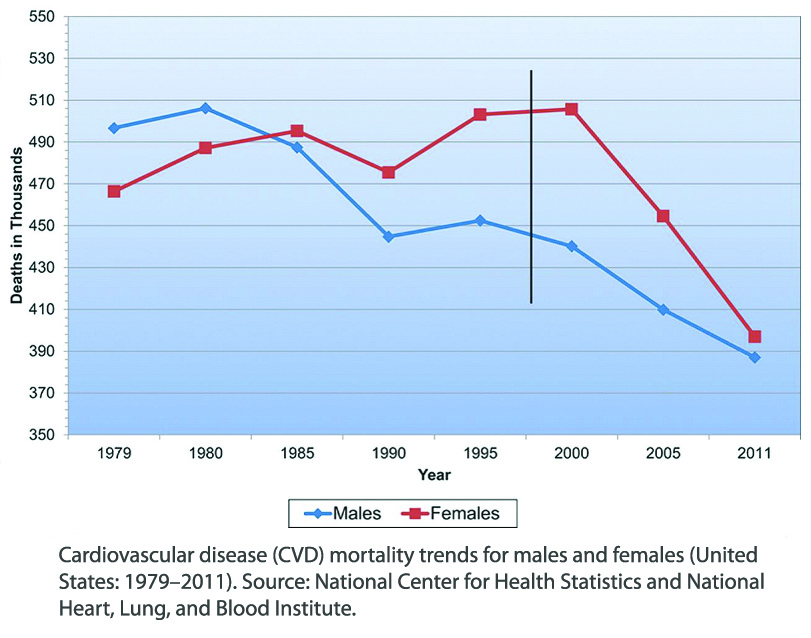Cardiovascular disease has long been the No. 1 killer of both men and women older than 20, claiming more lives per year than all forms of cancer combined, according to the National Center for Health Statistics.
Yet decades of gender disparity in research, prevention and health care have left women at a disadvantage.
Compared to men, women are less likely to recognize cardiovascular disease as their leading cause of death, know the symptoms of a heart attack or receive aggressive diagnosis and treatment, according to the American Heart Association.
Heart disease and stroke took the lives of nearly 400,000 U.S. women in 2013, according to the Centers for Disease Control and Prevention’s most recent available data. That’s one in three female deaths — breast cancer causes one in 31.
But the AHA has made notable progress toward reversing these trends since launching its Go Red For Women initiative in 2004.
Go Red For Women not only raises awareness about cardiovascular disease in the female population, but also in the medical community, by providing women-specific treatment guidelines, pushing for equal gender representation in clinical trials and much more, said Brianne Harman, communications director of the AHA’s central Ohio division.
“Through outreach directly from Go Red For Women, roughly 293 fewer women die each day from heart disease and stroke,” Harman said, adding that since 1997, awareness among women that cardiovascular disease is their No. 1 health threat has increased from 26 percent to 56 percent.
Awareness among African-American and Hispanic women is significantly lower, according to the AHA.
And since 80 percent of cardiovascular disease is preventable through education and lifestyle change, Harman said, awareness is key.
“As an African-American female, it is a badge of honor to lead the charge toward heart disease research and preventive care,” said Kimberly Blackwell, CEO of PMM Agency and chair of the 2017 Go Red For Women in Columbus.
One way Go Red raises awareness is through National Wear Red Day, which is held the first Friday in February, falling this year on Feb. 3. More than 2,000 U.S. landmarks will light up red, including Columbus City Hall.
Columbus will host its 13th Go Red For Women luncheon on Feb. 23 at the Hyatt Regency Columbus, as one of 180 Go Red luncheons across the country, Harman said.
The top risk factors for cardiovascular disease are high blood pressure, high cholesterol and smoking, according to the CDC. Other risks include poor diet, lack of exercise and excessive alcohol use.
“Your family history is another thing that should definitely be discussed because that’s a big risk factor, and one that you can’t control,” she added.
Another issue is that women are more likely than men to experience nontraditional heart-attack symptoms, such as jaw pain, neck/back pain, pain down one side of the arm, nausea and fatigue, among others.
Misunderstanding these signals can lead to delays in diagnosis and treatment, Harman said. Fewer women survive their first heart attack than men, according to the CDC.
But advances are on the horizon.
The AHA has set a goal of reducing death and disability from cardiovascular disease and strokes in Americans by 20 percent by the year 2020.
The organization is on track to meeting the goal, with a decrease in deaths and disabilities every year since 2010, with the exception of 2016, Harman said.
And after a push for more gender-specific research, the FDA is now required to report on how many clinical trial results are documented by gender. The AHA has given more than $3.3 billion to cardiovascular-disease research — second only to the U.S. government.
Get involved in Go Red For Women by registering with the initiative at goredforwomen.org.
This story was originally published in The Columbus Dispatch’s Go Red For Women special section on Feb. 1, 2017.



